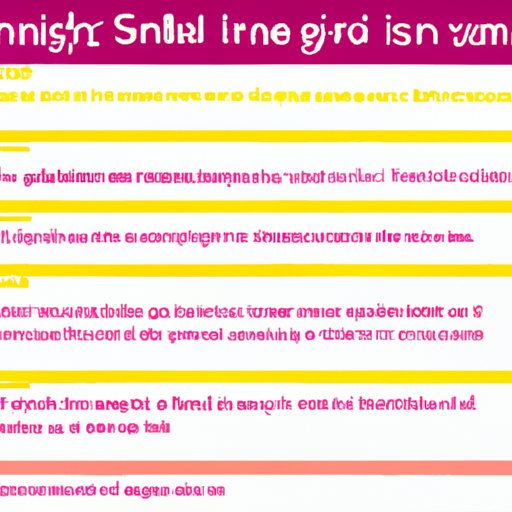Introduction
In grammar, a split infinitive occurs when an adverb or other word is inserted between the two parts of an infinitive verb. For example, the phrase “to boldly go” contains a split infinitive because the adverb “boldly” is inserted between “to” and “go.” Split infinitives are often seen as incorrect by those who strictly adhere to traditional grammatical rules, but they can be used properly in certain contexts.

How to Recognize and Avoid Split Infinitives in Writing
When it comes to recognizing and avoiding split infinitives in writing, there are several strategies that can be employed. First, it is important to identify split infinitives when they occur. Split infinitives are usually easy to spot because they contain an adverb or other word inserted between the two parts of an infinitive verb. For example, the phrase “to quickly run” contains a split infinitive because the adverb “quickly” is inserted between “to” and “run.”
Once a split infinitive has been identified, it is important to consider whether or not it should be avoided. In most cases, it is best to avoid using split infinitives because they can make sentences awkward and confusing. However, there are certain situations where a split infinitive may be necessary. In these cases, it is best to use the split infinitive sparingly and only when absolutely necessary.

A Guide to Understanding Split Infinitives in Writing
Split infinitives are often seen as incorrect, but they can be used properly in certain contexts. For example, a split infinitive may be necessary for clarity or emphasis. In these cases, it is often better to use the split infinitive than to rephrase the sentence in a way that does not use a split infinitive. For example, the phrase “to boldly go” is more effective in conveying the intended meaning than the phrase “to go boldly.”
Split infinitives can also be used to create a rhythm or flow in a sentence. For example, the phrase “to slowly and carefully read” is more effective in creating a sense of rhythm than the phrase “to read slowly and carefully.” In these cases, it is important to consider the context of the sentence and determine if using a split infinitive is the best option.

Common Mistakes with Split Infinitives in Writing
While split infinitives can be used properly in certain contexts, it is important to be aware of some common mistakes that can occur when using them. One of the most common mistakes is misusing adverbs with split infinitives. Adverbs should be placed as close to the verb as possible, so if a split infinitive is used, the adverb should be placed between the two parts of the infinitive verb. For example, the phrase “to quickly and carefully read” is incorrect because the adverb “quickly” should be placed before “carefully.”
Another common mistake is inserting unnecessary words into a split infinitive. For example, the phrase “to very quickly and carefully read” is incorrect because the adverb “very” is unnecessary. In this case, it would be better to simply use the phrase “to quickly and carefully read.”
The Benefits of Using Proper Split Infinitives in Writing
Despite the fact that split infinitives are often seen as incorrect, they can be used properly in certain contexts. When used correctly, split infinitives can help enhance the clarity of meaning in a sentence and strengthen the overall sentence structure. For example, the phrase “to quickly and carefully read” is more effective in conveying the intended meaning than the phrase “to read quickly and carefully.”
Split infinitives can also be used to create a sense of rhythm or flow in a sentence. For example, the phrase “to slowly and carefully read” is more effective in creating a sense of rhythm than the phrase “to read slowly and carefully.” In these cases, it is important to consider the context of the sentence and determine if using a split infinitive is the best option.
Conclusion
Split infinitives can be used properly in certain contexts. When used correctly, split infinitives can help enhance the clarity of meaning in a sentence and strengthen the overall sentence structure. It is important to recognize split infinitives when they occur and consider whether or not they should be avoided. In most cases, it is best to avoid using split infinitives, but there are certain situations where a split infinitive may be necessary.
(Note: Is this article not meeting your expectations? Do you have knowledge or insights to share? Unlock new opportunities and expand your reach by joining our authors team. Click Registration to join us and share your expertise with our readers.)
